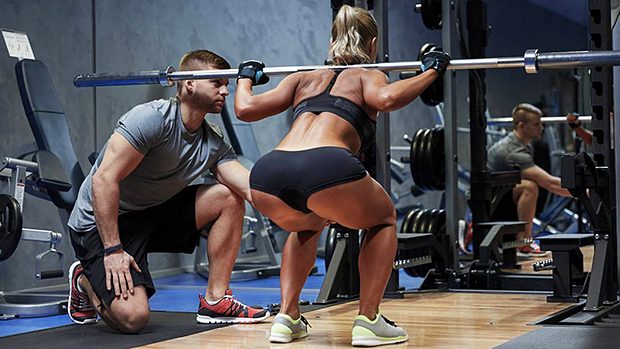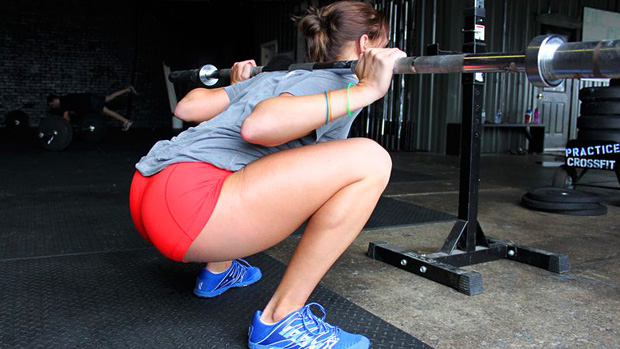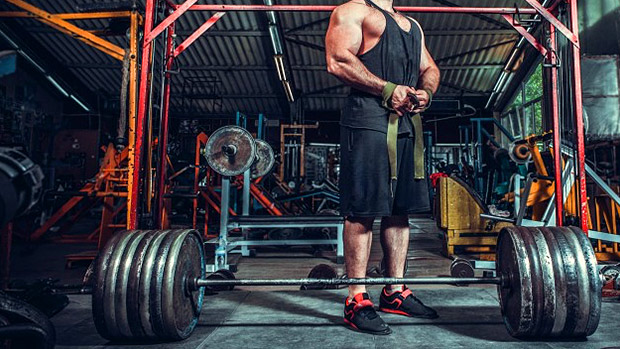Bodybuilding articles have traditionally been like one of your favorite CD's from high school left on continuous repeat. Month after month, the same 2000-word odes to body part training, complete with tired, recycled titles like "Pump Those Pecs," "Add Inches to Your Arms," and everyone's favorite rhyming simile, "Build Shoulders Like Boulders!"
Today, however, in what 30 years ago would've been a sure sign that the apocalypse is at hand, every other article seems to be about glute training.
Now, I have nothing against a shapely booty – quite frankly, the world would be a sad place without them – but I argue that all this newfound focus on glute training is an overreaction.
When glute bridges were first "introduced," everyone jumped on the idea, and it certainly made a difference in terms of overall function. A simple glute bridge performed during the warm-up seemingly worked wonders, and glute activation was here to stay.
Originally, the message was that glute activation helped eliminate synergistic dominance – the hamstrings and lower back taking over the glutes' duties, which we're told can occur if the glutes are weak.
The supposed benefit was less back pain and injury. When the glutes do their job, the lower back is safe. Or is it?
I argue that forgotten in all this glute training hullabaloo is lower back training.
There's a link between lower back strength and back performance, just as there's a link between heavy barbell lifts and lower back injury.
The old expression says it's the weak link in the chain that breaks first. And no one understands this better than the bodybuilder's kindred cousin, the powerlifter.
Bodybuilders frequently suffer lower back and hamstring injuries using decidedly wimpy poundages by comparison, yet powerlifters can regularly handle far greater loads seemingly without pain or injury.
Is there a secret of some kind, or is it just a case of the sport choosing the athlete? Or is it simply blind luck?
When asked something similar, Louie Simmons of Westside Barbell summed it up nicely:
"Why do we never pull hamstrings? Because we don`t have weak lower backs."
You can expand this beyond the hamstrings to "lower back training also helps prevent lower back injuries." For years Simmons has advocated direct lower back training, not only to perform better and lift more weight, but also to rehabilitate lower back injuries and prevent them from popping up in the first place.
While compound lifts like squats, deadlifts, and good mornings certainly stimulate lower back strength, we can't escape the fact that the weak link fails first. With that in mind, supplemental exercises targeting the lower back directly are also recommended.
Since the back raise can be found in most decent commercial gyms and is a solid piece of equipment, let's take a look at some variations of this movement that you can add to your training regimen with relative ease.
Technique Notes
This exercise isn't very advanced, though some still prefer a "dinosaur training" variation that isn't necessarily healthy. I'm referring to the "rolling" back raise version. Unless for some reason you're convinced this technique will somehow let you reach your training goals faster (highly unlikely), don't do it.
To that end, there are basically two rules when it comes to back raises:
- Keep a straight back.
- Some flexion in the bottom position can be okay, just know your limits.
The exercises in this article are intentionally done with a lot of lower back involvement. While they can also be performed more "glute-style," I consider direct lower back training to be crucial, hence the technical execution.
But if you feel "safer" with a more hip-driven execution, do that. Although some variations naturally involve the glutes to a greater degree anyway.
Back Raise with Chains
You should be able to do a ton of standard back raises. If you're too weak to perform at least 15 good repetitions with just bodyweight, you should stop reading right now and go train. Keep doing them in your workouts until you hit the 15-rep minimum. This article will be waiting for you when you get back.
However, since the regular back raise isn't very challenging for most, we need to load it. Several variations are possible, but an easy and comfortable variation is the back raise with chains. This is also a good variation if your shoulders are banged-up or injured, as the backside has to do all the work.
Back Raise with Kettlebell
This is a popular variation in commercial gym settings. Everyone seems to love kettlebells, but dumbbells can work just as well. It obviously includes the upper body/arms more than the previous exercise.
Back Raise with Band
I love accommodating resistance. I admit, I have a secret crush on Louie Simmons, which I suppose isn't a secret anymore. Oh well.
If science says accommodating resistance is beneficial for the compound lifts, why not take advantage of this principle for back raises? Especially considering the back raise movement pattern is clearly a part of the deadlift and squat.
If you want your lower back to handle big weights with high bar speed, it must also tolerate speed in a more "isolated" setting as well.
Back Raise with Band and Kettlebell
The bands alone will give you a good burn, but the bottom position is still too easy so additional resistance is required. This is also a solid choice for supplemental work on dynamic effort days.
Back Raise with 2 Bands
No, it's not the previous version with more tension. Get into position for the regular banded version, then grab another band, pull the arms out and hold them in a "cross-position." Now do regular back raises while maintaining this position. It will make the upper back muscles kick in significantly. It's also a fine activation or rehab exercise as the whole backside has to wake up.
Back Raise – Zercher Style
Now we're talking. The hardcore back raise! Zercher squats and deadlifts are awesome as every single muscle must kick in to get the job done. While the back raise version of the Zercher isn't as hard, you'll definitely feel them working after a couple good hard sets. You can either start each rep with the plates on the ground (similar to a deadlift), or perform them continuously as a squat, depending on what you want to achieve.
Back Raise – Zercher-Style with Bands
For a back raise variation that really hits your lower back, add bands to the Zercher variation. This is an awesome move. Hit that shit!
Static Back Raise with Rows
In the deadlift, squat, and several other moves, the lower back has to work isometrically and the upper back has to do its part as well. Why not hit it all at once? Just get into the back raise, grab the barbell, and perform rows.
Back Raise – Isometric Upper Back
I considered this variation a supplemental teaching tool for the bench press. A common fault with many bench pressers is the loss of scapular stability and upper back tension, as you have to squeeze the shoulder blades together. This is easier to do when the lower back is contracted, hence this variation.
Get into the top position of a barbell row and perform back raises. Have the bench press in mind as you do the exercise.
One-Legged Back Raise
I have to include one-legged versions as well. There's a good chance one of your legs or one side of your back is weaker than the other. This isn't good for either performance or health. The one-legged back raise is a solid exercise to address these issues and can also be loaded as a two-legged version.
One-Legged Back Raise with One-Arm Row
We know one hip works with the opposite arm in running and other activities, so we should also train specifically to address this. Get into a static one-legged back raise position and perform rows with the opposite arm. Feel the glute and lat connection!
I borrowed this idea from a similar exercise in DeFranco and Smith's "Extreme" DVD.
You're all set, son – you've got more variations of the back raise than Lindsay Lohan has traffic citations. It's a good thing too, cause you can't overlook direct lower back training. And if you want to get stronger, you need to back that ass up.





